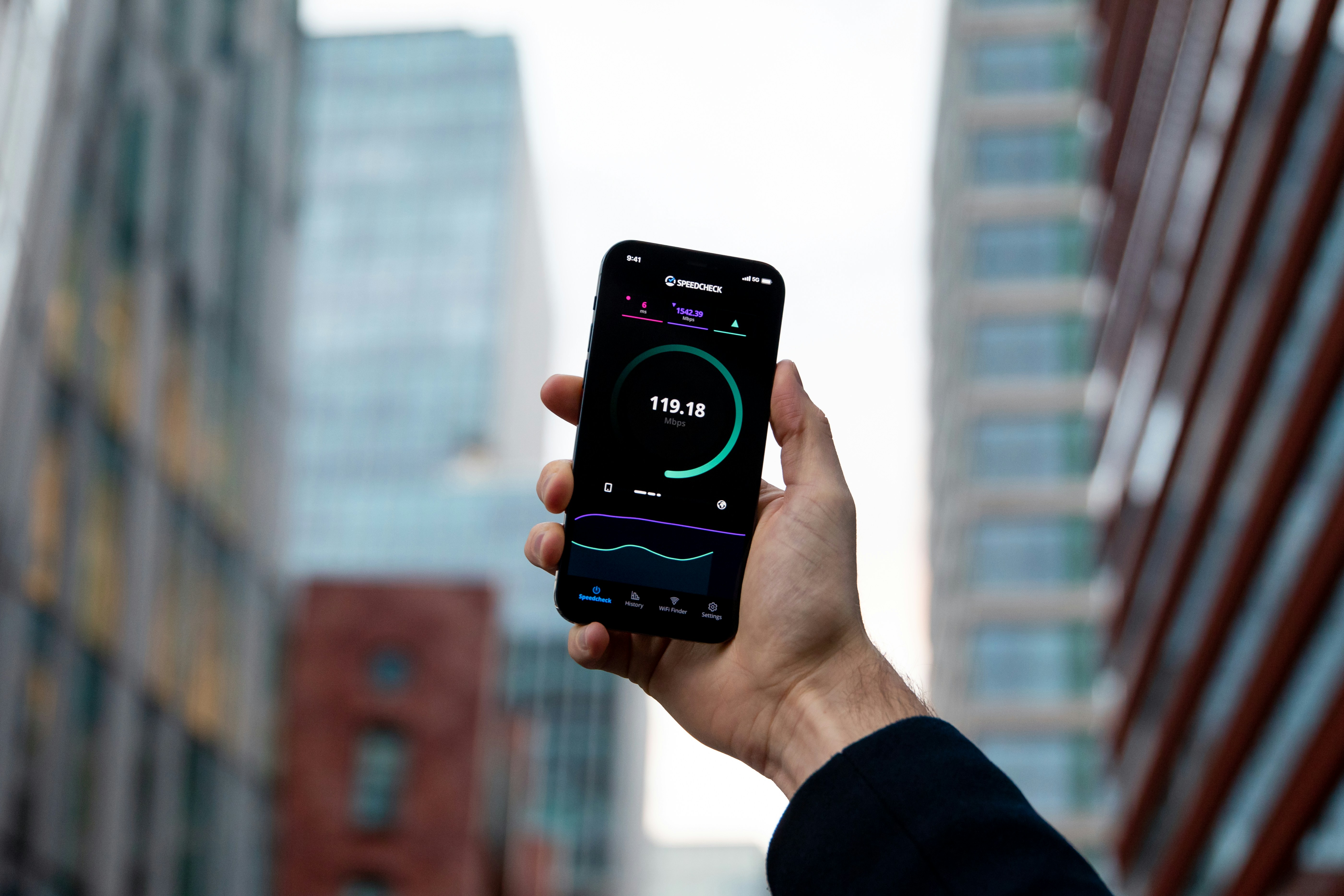The Crucial Role of Fiber Optics in 5G Networks

Understanding the Basics of Fiber Optics and 5G Networks
In today's digital age, Fiber Optics and 5G Networks play pivotal roles in shaping our connected world. To comprehend their significance, it's essential to delve into the fundamental principles behind these technologies.
What are Fiber Optics?
The Science Behind Fiber Optics
At its core, Fiber Optics involves the transmission of data through optical fibers, which are slender, flexible strands made of glass or plastic. These fibers utilize total internal reflection to convey light signals over long distances with minimal loss. This innovative method enables rapid data transfer and forms the backbone of modern telecommunications infrastructure.
Why Fiber Optics Matter
The adoption of Fiber Optics has revolutionized communication systems by offering unparalleled bandwidth and reliability. Its ability to transmit vast amounts of data at the speed of light has propelled advancements in internet connectivity, telecommunication networks, and beyond.
The Evolution of 5G Networks
From 4G to 5G: What's New?
With the transition from 4G to 5G, a new era of wireless technology has emerged. 5G Networks represent a significant leap forward in terms of speed, capacity, and connectivity. This next-generation network aims to support a myriad of applications ranging from augmented reality to autonomous vehicles.
The Importance of 5G Technology
The advent of 5G Networks holds immense promise for various industries, including healthcare, manufacturing, and entertainment. Its ultra-low latency and high data rates pave the way for transformative innovations that can reshape how we interact with technology on a daily basis.
The Role of Fiber Optics in 5G Network Infrastructure
As technology continues to advance, the role of Fiber Optics in 5G network infrastructure becomes increasingly vital. Understanding how fiber optics contribute to seamless connectivity and data transfer within 5G networks is essential for grasping the full potential of these cutting-edge technologies.
Enabling Seamless Connectivity and Data Transfer
The Technical Advantages of Fiber Optics
The integration of Fiber Optics in 5G Networks brings forth a multitude of technical advantages that underpin its pivotal role. These optical fibers facilitate high-speed data transmission with minimal latency, ensuring that information travels swiftly and efficiently across vast distances. The use of light signals in fiber optics enables an unparalleled level of bandwidth, allowing for the simultaneous transfer of large volumes of data without compromising speed or quality.
Real-World Applications and Examples
In real-world scenarios, the utilization of Fiber Optics within 5G Networks manifests in various applications that highlight its impact on connectivity and data transfer. For instance, in smart cities, fiber optics enable interconnected systems to seamlessly communicate and share data, supporting functions such as traffic management, energy distribution, and public safety. Furthermore, within healthcare settings, the integration of fiber optics ensures rapid transmission of medical imaging data for timely diagnoses and treatment planning.
Building the Backbone of 5G Networks
How Fiber Optics Support 5G's High-Speed Requirements
The robust nature of Fiber Optics aligns perfectly with the high-speed demands imposed by 5G Networks. By harnessing the inherent properties of light propagation through optical fibers, 5G networks can achieve unprecedented levels of speed and responsiveness. This capability is crucial for enabling emerging technologies such as virtual reality (VR), augmented reality (AR), and ultra-high-definition video streaming to function seamlessly within the 5G ecosystem.
Case Studies: Successful 5G Deployments with Fiber Optics
Numerous case studies underscore the successful deployment and utilization of fiber optics within 5G networks worldwide. For instance, in urban environments characterized by dense population centers, fiber optic cables have been instrumental in establishing reliable connections for high-density 5G coverage. Additionally, industries such as logistics and transportation have leveraged fiber optics to support advanced applications like autonomous vehicle communication systems and real-time fleet management solutions.
Fiber Optics in 5G Networks: Key Benefits
As the world embraces the transformative power of Fiber Optics and 5G Networks, it's crucial to recognize the pivotal role they play in enhancing connectivity and driving technological advancements. Understanding the advantages of Fiber Optics in 5G networks is essential for comprehending their profound impact on telecommunications infrastructure.
Enhancing Network Capacity and Efficiency
In the realm of telecommunications, the integration of Fiber Optics within 5G networks brings forth a host of benefits that significantly elevate network capacity and operational efficiency.
Meeting the Demand for High Data Rates
The utilization of Fiber Optics addresses the escalating demand for high data rates within 5G networks. These optical fibers enable the swift transmission of vast volumes of data, catering to the insatiable appetite for bandwidth-hungry applications such as ultra-high-definition video streaming, immersive virtual reality experiences, and real-time cloud computing. The unparalleled bandwidth offered by fiber optics ensures that 5G networks can seamlessly accommodate these data-intensive services without compromising speed or quality.
Reducing Latency for Improved User Experience
By leveraging the inherent properties of light propagation, fiber optics in 5G networks effectively minimize latency, thereby enhancing user experience across various applications. Whether it's online gaming, remote surgical procedures, or autonomous vehicle communication systems, low latency is paramount for ensuring real-time responsiveness and seamless interactions. The integration of fiber optics plays a pivotal role in reducing delays and optimizing overall network performance, ultimately leading to enhanced user satisfaction and operational efficiency.
Future-Proofing Telecommunications Infrastructure
The advantages of Fiber Optics extend beyond immediate gains, offering a future-proof solution that can adapt to evolving technological landscapes and burgeoning demands.
The Scalability of Fiber Optics
One of the key benefits lies in the scalability inherent to fiber optics in 5G networks, allowing for seamless expansion and accommodation of increasing network requirements. As technology continues to advance at a rapid pace, fiber optics provide a robust foundation that can readily scale to meet escalating demands without necessitating extensive overhauls or replacements. This scalability ensures that telecommunications infrastructure remains agile and responsive in an ever-evolving digital ecosystem.
Preparing for Next-Generation Networks Beyond 5G
In embracing fiber optics within 5G networks, telecommunications infrastructure lays a solid groundwork for future generations of wireless technology. The inherent capabilities of fiber optics position telecommunications providers to seamlessly transition into next-generation networks beyond 5G, ensuring that they are well-equipped to support upcoming innovations with minimal disruption. This forward-looking approach not only future-proofs existing investments but also fosters an environment conducive to continuous technological evolution.
Staying Up-to-Date: The Future of Fiber Optics in 5G
As technology continues to evolve at a rapid pace, staying up-to-date with the latest advancements in Fiber Optics and 5G Networks is crucial for understanding the trajectory of telecommunications infrastructure.
The Latest Information on Fiber Optics and 5G Technology
Innovations in Fiber Optic Technology continue to drive the expansion and enhancement of telecommunications networks. Advancements in fiber optic materials, such as improved glass compositions and advanced polymers, are enabling higher data transmission rates and greater durability. Additionally, ongoing research into signal amplification techniques and signal regeneration technologies promises to further optimize the efficiency and reach of fiber optic networks. As for 5G technology, continuous developments in antenna design, spectrum allocation, and network architecture are shaping the future of wireless connectivity. These advancements aim to maximize data transfer speeds, minimize latency, and expand network coverage to support a wide array of emerging applications.
Emerging Trends in 5G Networks are also poised to redefine connectivity standards. The integration of artificial intelligence (AI) algorithms into 5G network management holds promise for optimizing network performance and predictive maintenance. Moreover, the convergence of 5G with edge computing is expected to revolutionize real-time data processing capabilities, enabling ultra-low latency applications across various industries.
Looking Ahead: What's Next for Fiber Optics in 5G?
Predictions for the Evolution of 5G Networks indicate a continued focus on enhancing network reliability and security while accommodating an increasingly diverse range of connected devices. As the Internet of Things (IoT) ecosystem expands, 5G networks will need to adapt to support massive machine-type communication (mMTC) requirements efficiently. Furthermore, ongoing research into terahertz frequency bands and free-space optical communication may pave the way for even faster wireless transmission speeds beyond traditional radio frequencies.
The Ongoing Importance of Fiber Optics in Telecommunications cannot be overstated. As next-generation networks continue to emerge, fiber optics will remain a foundational element due to its unparalleled bandwidth capacity and reliability.


